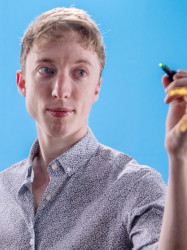BibTex format
@phdthesis{Page:2016,
author = {Page, AF},
title = {Surface Plasmon Emission and Dynamics in Active Planar Media},
url = {http://hdl.handle.net/10044/1/30760},
year = {2016}
}

Faculty of Engineering, Dyson School of Design Engineering
Principal Teaching Fellow